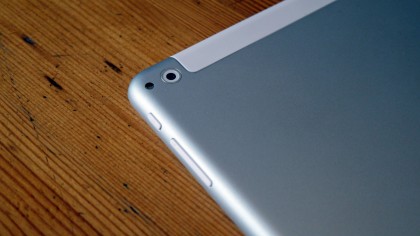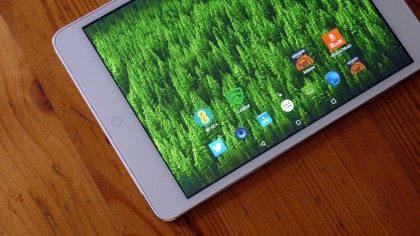Why you can trust TechRadar
Moving on screen and there's both good and bad news. On the positive side, EE hasn't tampered too much with Android, keeping things pretty much stock on the Jay.
That gives you a nice, clean slate to work with without too much bloat. EE has pre-installed a handful of its own applications including My EE, Amazon, Amazon Kindle and Amazon Music, but I wasn't too offended. You can't however uninstall any of these.

The Jay runs Android Lollipop, which is over a year and a half old and considering its replacement, Android Marshmallow, has been out for over six months now it's a little embarrassing it's running such old software. There's no clue as to when Marshmallow will be pushed to the Jay, but I've contacted EE to find out.
EE has equipped the Jay tablet with a 1GHz quad-core processor and 1GB of RAM – and sadly neither do it any favours when it comes to performance. The EE Jay is noticeably sluggish, even during simple tasks such as unlocking and browsing round the tablet.
Once it warmed up a bit, for general tasks at least, performance did smooth out, with the Jay responding a little more rapidly. It's far from speedy though, so if you're used to slick high-end tablets you may find yourself a little frustrated.

For those looking for an everyday slate for web browsing, emails and the odd spot of gaming though, the Jay delivers enough. Just don't expect it to go above and beyond.
I ran Geekbench 3 on the EE Jay, and the average multi-core score came out at 1,184. That's a pretty lowly result, and one which is beaten by many budget smartphones. That said, you can't expect blockbuster results from a tablet that's costing you £120.
Sign up for breaking news, reviews, opinion, top tech deals, and more.
There is another kicker for the EE Jay – the fact it comes with 4G capabilities built-in. EE has the largest, and fastest, network in the UK, so you're more likely to get a connection on your commute to work or during the long slog up a motorway to visit family.
While having a speedy data connection at your fingertips is handy, it is limited by the Jay's less than stellar performance. Web pages still take a little time to load, even with a strong broadband or 4G connection, so the true power of the EE network isn't fully realised here.
There's an additional cost for the 4G service, which requires you to either sign up for a two-year plan (which sees you pay £29.99 up front for the Jay for 10GB of data and an £18.50 monthly outlay) or opt for the Pay as You Go deal at £119.99.

Display
The EE Jay has a 768 x 1024 display resolution, which may not sound too shabby, but when it's stretched over 7.85 inches it doesn't look quite so good.
Android appears grainy, with a clear lack of sharpness. It's not bad enough to make browsing websites or reading emails impossible, but you're more than likely to notice a difference between this and your pixel-dense smartphone.
Firing up BBC iPlayer the viewing experience isn't actually too bad, and held at a distance I was able to comfortably consume the new series of Top Gear (and Extra Gear). Turning brightness up enhances the viewability, but you'll want to ensure you dial it down when you're done to conserve precious battery life.
Press too hard on the screen and your finger will distort the display around it, which calls into question the protective qualities of the glass which covers it. It shouldn't cause issues, but you may want to prod gently at it.
Early verdict
The EE Jay is appealing to the eye, and the wallet, but as soon as you get past the looks and the price things don't seem quite as rosy.
It feels underpowered, the screen quality isn't the best and the fact the software is so old makes it feel a little unloved. If EE can get the Jay running Marshmallow things should improve, but for now it's looking like a basic budget buy, but we'll see how it fares in our full review.

TechRadar's former Global Managing Editor, John has been a technology journalist for more than a decade, and over the years has built up a vast knowledge of the tech industry. He’s interviewed CEOs from some of the world’s biggest tech firms, visited their HQs, and appeared on live TV and radio, including Sky News, BBC News, BBC World News, Al Jazeera, LBC, and BBC Radio 4.
What is a hands on review?
Hands on reviews' are a journalist's first impressions of a piece of kit based on spending some time with it. It may be just a few moments, or a few hours. The important thing is we have been able to play with it ourselves and can give you some sense of what it's like to use, even if it's only an embryonic view. For more information, see TechRadar's Reviews Guarantee.
